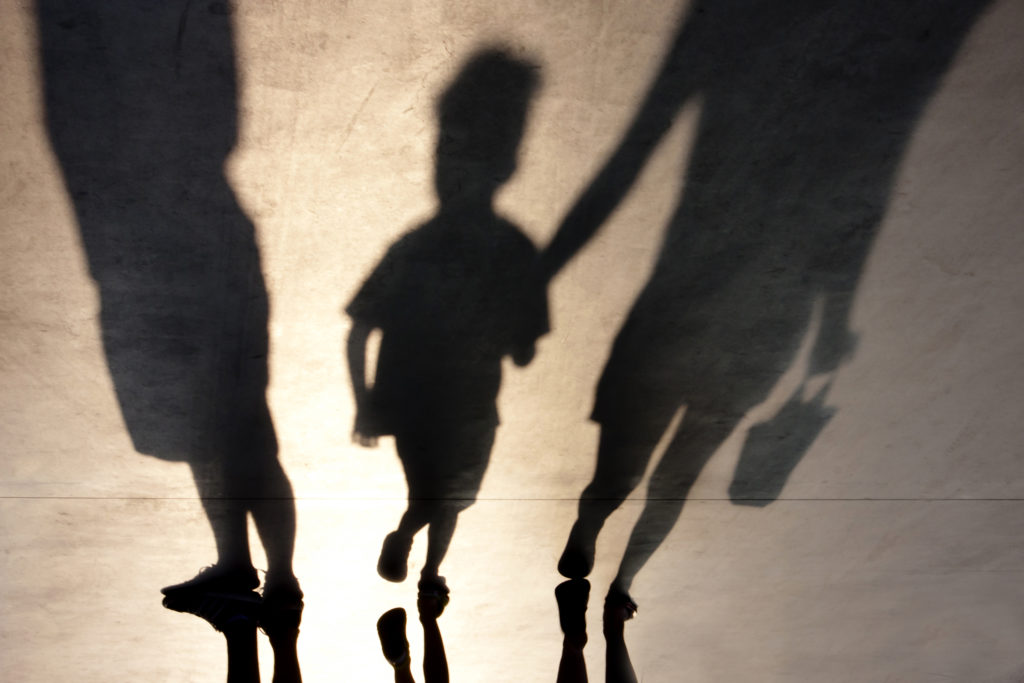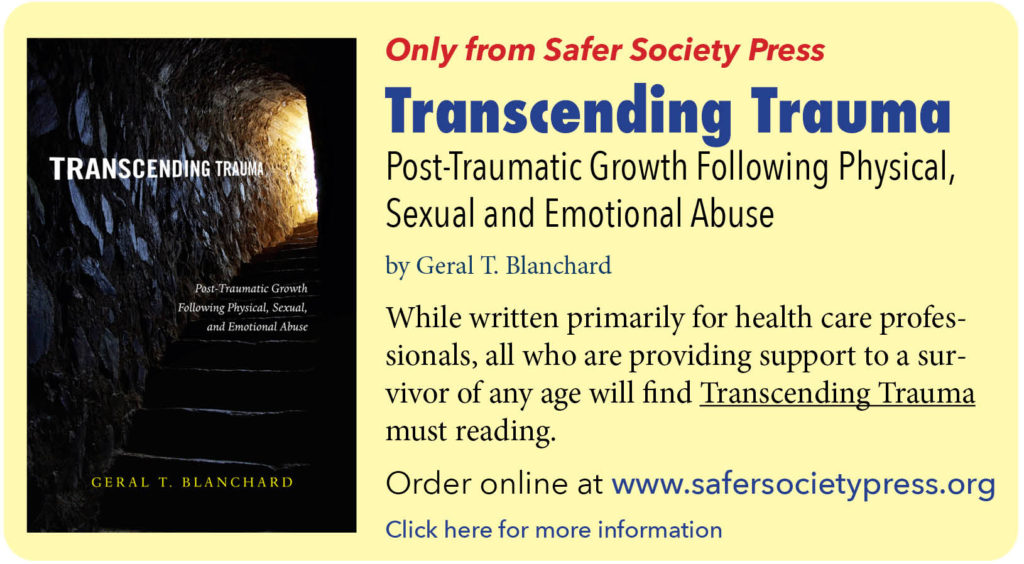Foster Care-Does It Mitigate or Exacerbate Trauma?
By Sarah Kull, LCSW
According to the U.S. Department of Health & Human Service, in 2018, there were 437,283 children in the foster care system nationwide.1 Between 2011 and 2017, the trend had been for more children to enter foster care than exit it; 2018 was the first year to see a slight reduction in those numbers.
What’s The Harm?
Children are often removed from their homes of origin after witnessing and/or experiencing abuse and neglect or family dysfunction and placed in foster care to ensure their well-being; however, we have yet to assess the damage done to the children by this process. Although foster care systems in the U.S. were developed to protect children in harm’s way, there is significant evidence that foster care may exacerbate their trauma from an attachment perspective.2 Indeed, the disruption of a child’s primary attachment and the detrimental effects of loss of primary caregivers can become compounded with each subsequent foster home move.
An overall look at health outcomes of children in care suggests that children in foster homes fare worse when compared with their non-institutionalized peers in terms of physical and mental health.3 Knowing what we know about adverse childhood experiences (ACEs) and their effect on adult physical, mental, and social health outcomes, this makes sense. Some 60% of children removed from their parents stay in foster care for more than 12 months, and the length of time spent in care and the probability of achieving some kind of permanency decreases for older children or children with mental, emotional, or physical disabilities.4
A System That Is Overloaded and Underfunded
Any worker at a child welfare nonprofit can tell you that resources are stretched thin—large caseloads, high caseworker turnover, lack of affordable services, and a dearth of child psychiatrists nationwide are just a few of the barriers to addressing the myriad mental health concerns children in care bring to us. We are bringing more children into care, but in a system without the capacity to address their needs, we risk traumatizing them further.
Discussions about how to alleviate the harm caused by foster care, one of the oldest social welfare systems in the country, have yielded policy changes at statewide and federal levels, but with every change new challenges pop up with regard to our design of or approach to foster care.
Is Placement With Relatives A Solution Or A Problem?
Policies have attempted to alleviate some of these issues, related to healthy child development and growth, by emphasizing the importance of placement with relatives after children are removed from the home, whenever possible. Between 2007 and 2017, the use of relative foster homes increased from 25% of placements to 32%, following a slight decrease in use of non-relative homes, group homes, residential

programs, and independent living.5 While maintaining a child in the family of origin might be preferred, the preference for relative homes has presented unique licensing and casework challenges. Do we hold the family relationship paramount in the face of un-licensable conditions? Do we make special accommodations for relatives who cannot engage in services or ensure the child’s participation in services due to lack of resources, transportation, hectic work schedules, etc?
Is There A Federal Solution?
The child welfare system in this country is not a federal program. The experience of children in care can differ wildly from state to state, as can rates of removal, placement in relative care, length of stay, and reunification with family of origin. For instance, the national average length of stay in foster care is 25 months.6 Whereas, in Illinois (the state in which I work and practice), the average length of stay is 34 months.7
The Family First Prevention Services Act of 2018 (FFPSA) includes national licensing standards and incentives for states to reduce the number of children served in institutional settings. This federal legislation attempts to bring the programs of all states under one standard of care and hold all states to the same expectations. The question here, however, is whether one sweeping bill can adequately address concerns for all states, which have differences in racial and age demographics, socioeconomic make-ups, and political climates.

The questions that plague child abuse research and out-of-home placements are complex and difficult to answer simply by policy change, sweeping or otherwise. If we leave children in dangerous home situations, we risk physical and emotional harm. If we remove them from their homes of origin, we risk traumatizing them and/or disrupting their attachments, and often do not have adequate resources to address any mental health concerns. If we place with relatives, we may be working with families reticent to otherwise engage in a complex system. Should we divert resources toward programs that prevent children from coming into care in the first place, or should we first fund mental health services for children currently in foster care? Is it possible to do both, as the Family First Prevention Services Act has attempted to do? Each question raises more complications than answers, and at each turn we make hard decisions about what will most benefit our children and what they must endure.
THE FAMILY FIRST PREVENTION SERVICES ACT
Signed into law as part of the Bipartisan Budget Act of 2018, this act reforms the federal child welfare financing streams (Title IV-E and Title IV-B of the Social Security Act) to provide services to families who are at risk of entering the child welfare system. The bill aims to prevent children from entering foster care by allowing federal reimbursement for mental health services, substance use treatment, and in-home parenting skill training. It also seeks to improve the well-being of children already in foster by incentivizing states to reduce placement of children in congregate care. Click here to read a more complete summary of this important legislation.
What Are Helping Professionals Up Against?
In the face of these difficult and possibly damaging choices, what can helping professionals do to support children in these situations? The importance of understanding the possible trauma of foster care, and recognizing and addressing this across all child development disciplines cannot be overstated. Schools in the U.S. are beginning to recognize the importance of promoting trauma-informed behavioral management strategies for all students, but additionally they need to provide social work support for those children in the foster care system and train their staff to work effectively with substitute and relative caregivers. After all, school is where these children spend most of their time and often make some of their most stable attachments. Helping professionals delivering social work services to children in foster care should have smaller caseloads so that they are able to fully support their children who are in, or are headed for, foster care, and focus on the unique situation of each child.
ATTENTION ALL MEDICAL PROFESSIONALS
Medical professionals should learn ways to respond empathically to signs of trauma in children, especially for those in foster or other out-of-home care, and make appropriate referrals for needed services. Needless to say, these referrals should, in a word, exist. But it is common knowledge that mental health providers who accept Medicaid, the health insurance most used by youths in care, are few and far between, and there is a general dearth of pediatric psychiatrists in this country.
In sum, for helping professionals across the board, the solution calls for recognizing the problems inherent in our foster care system, determining to address the problems, and fighting for the needed resources. As an intervention that shapes—but also has the capacity to harm the mental and social health of our children—foster care is a much-used, and often misunderstood, system that requires a systemic approach to change in order to meet its goals of facilitating, and not harming, positive child development.
- Children’s Bureau. (2019). The AFCARS Report No. 26. U.S. Department of Health & Human Services. https://www.acf.hhs.gov/sites/default/files/cb/afcarsreport26.pdf
- Troutman, B. (2011). The effects of foster care placement on young children’s mental health: Risks and opportunities. [Unpublished manuscript]. Available at www.icmentalhealth.org
- Turney, K., & Wildeman, C. (2016). Mental and physical health of children in foster care. Pediatrics, 138(5). https://doi.org/10.1542/peds.2016-1118
- Children’s Bureau. (2016). Child welfare outcomes: 2016 report to Congress. U.S. Department of Health & Human Services. https://www.acf.hhs.gov/cb/resource/cwo-2016
- Children’s Bureau. (2019). The AFCARS Report No. 26. U.S. Department of Health & Human Services. https://www.acf.hhs.gov/sites/default/files/cb/afcarsreport26.pdf/
- Foster More. What is foster care? https://fostermore.org/what-is-fostercare/
- Fuller, T., et al. (2018). Conditions of children in or at risk of foster care in Illinois: FY2018 monitoring report. B.H. Consent DeCree Illinois Children & Family Research Center, School of Social Work, University of Illinois at Urbana-Champaign.

Sarah Kull, MSW, LCSW
Sarah is a clinical social worker who currently specializes in working with families in the child welfare system. Sarah holds a master’s degree in social work and is licensed to practice in Illinois. She has practiced with diverse populations, including unaccompanied migrant children, men anticipating release from state prison, and children in foster care, and, currently, she performs comprehensive assessments with families involved with the Department of Child and Family Services.


